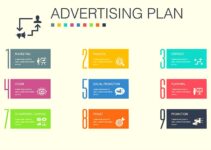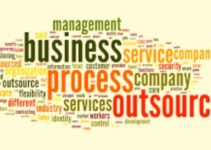Michael Porter’s theory developed four categories of competitive strategy, which comprise differentiation, cost leadership, cost focus, and focus differentiation. Today, we’ll discuss what is cost focus; how to create its strategy, advantages, and disadvantages.
What is Cost Focus?
The cost focus is a form of Porter’s competitive strategy (third category) that attracts the attention of customers. Businesses and companies employ this strategy to provide the lowest price of their products and services than the competitors in the industry and the market. Often, companies that follow this strategy, target a specific segment of the customer market.
The purpose of the cost-focus strategy is to lower the operational cost of the company as much as possible. Usually, people confuse the term cost focus with price, but they both are completely different. Price focus is when companies lower the price of the product or service that the customers have to pay for it. When they lower their price, it makes them cost leader in the market, and being a cost leader sometimes impacts their profit margin when the sale is low.
The goal of the cost-focus strategy is to increase the markup price of the product, decrease the price of the consumer product or service, amplify the financial efficiency of the product or service, and decrease the production cost. Companies like Walmart, McDonald’s, Primark, and RyanAir are following the cost-focus strategy.
How to Create Cost Focus Strategy
Some of the main ways how to create and implement the cost-focus strategy are as follows;
Buy from New Suppliers
Companies become comfortable by purchasing supplies from one supplier because they offer you the best price and occasional discounts. It is important to keep in mind that they are also a business firm, they offer you the price by keeping their profit margin. You can get the same price and deal from other suppliers as well or even less, you just have to look around.
If your company hires service-providing consultants like bookkeeping, accounting, marketing, and other services, then you should regularly analyze the service cost in the industry. You can save a lot of cost and money by hiring the other service-providing firm.
Advanced Technology
There is a difference between surviving businesses and thriving businesses and companies. Companies offer personalized service and compensation plans by applying the POS (point of sale) system. A better POS system would generate cost and revenue reports, they can easily spot weaknesses. It can collect and receive payments, and offer you analytics and valuable insight to innovate and reorganize your businesses, high sales environment, and customer payments.
Asset Utilization
Businesses and companies in the hospitality industry employ their assets to offer maximum service benefits in a specific time period. It helps them to serve more customers in a short time. However, asset utilization comprises mass-producing standardized products of the same material in the product industries.
High Production Scale
Mass-scale production and high asset utilization work alongside. When you buy goods in bulk quantity, it lowers the cost and offers you a better deal with the suppliers. Companies would have better-negotiating power in large-scale production and bulky orders.
Lower Employee Costs
The lower employee cost doesn’t mean kicking people out of your organization. It is important to recognize the sales trends in the market. A better POS system would allow you to generate more sales, traffic, better customer experience, and a higher profit margin. They offer you profit, employee status, and sales reports within the specific time frame of days, weeks, and months.
Benefits of Cost Focus
Some of the key benefits of the cost focus strategy are as follows;
Supply Chain Efficiency
It allows you to streamline your supply chain processes like negotiating over the price of the raw supplies like intermediaries and third-party suppliers. Usually, it helps the company to lower its cost.
Branding
Branding is a narrowly focused market and low-cost strategy. It won’t refer to your brand as cheap. However, the price you set for your product or service would tell what type of customer market you’re targeting like appealing to customers, investors, or bargain hunters.
Attracting Customers
It allows customers an opportunity to get a competitive price or bargaining power. When the company offers a product or service at a good price, then it attracts the attention of the customers.
Automation Tools
Analytical and automation tools would help you to know where you have financial leakage. When you synchronize your POS with your database software, then it would improve your organizational efficiency and business management tools.
Large Stock
When companies have a good relationship with the suppliers and they buy supplies in bulk quantity; then it means they’re moving to the economies of scale stage and that is good both for your customers and the company.
Product Turnover
When you have got operational efficiency, then it would lower the per-unit production time. Ultimately, it allows you to make the product readily available in the market.
Better Operations
When you have got automated tools and processes, then it takes limited time and lowers the probability of employee mistakes.
Conclusion: What is Cost Focus? Strategy, Benefits
After an in-depth study of what is cost focus; strategy, and benefits; we have realized that cost focus strategy helps companies to achieve competitive advantage. If you’re developing and implementing this strategy, then you should keep in mind the abovementioned tips and guidelines.

Ahsan Ali Shaw is an accomplished Business Writer, Analyst, and Public Speaker. Other than that, he’s a fun loving person.


